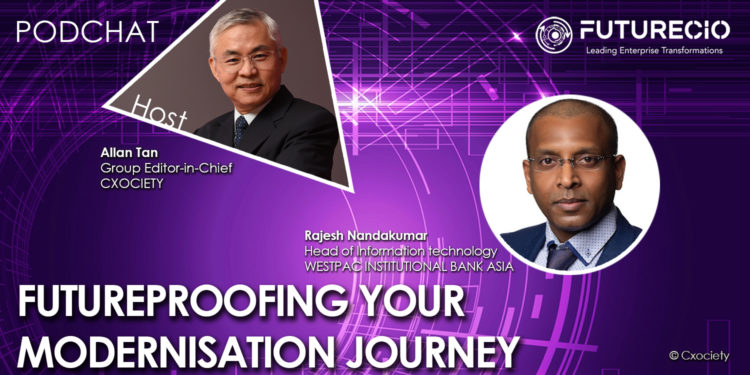Activities like video conferencing, mobile work, and cloud computing – all of these have been around well before the pandemic. Before anyone ever coined businesses have been undergoing transformation to reflect opportunities presented at the time. If what we mean by digital is the use of information technology, that too has been around for decades.
What is different though is that in recent years, digital transformation brings initiatives and technologies to support an organisation’s effort to align people, processes, and technology more closely towards the company’s core business objectives and future vision.
One thing is clear for many organisations, digital business transformation is not a project or technology or initiative that can be implemented and the organisation moves on to the next. It is a journey that will evolve over time.
But how does one stay up-to-date or even ahead with the latest innovations in technology as well as best practices? This can prove to be particularly challenging for businesses in heavily regulated industry sectors like financial services.
Gartner forecasts that technology spending by banking and investment services will grow 6.1% in 2022 to US$623 billion globally. “While growth is the top priority, the need to manage risk, optimize costs and increase efficiency also requires new technology innovations,” said Moutusi Sau, VP Analyst at Gartner.
Gartner cautions that financial services CIOs will face continuing volatility, requiring them to master a new set of rules for digital business and innovation. In Asia, recognition of external and internal threats to the normal operation of financial services has meant regulators are actively monitoring and managing the industry.
Rajesh Nandakumar, head of Information technology at Westpac Institutional Bank Asia, cited the efforts by the Monetary Authority of Singapore (MAS) in keeping one eye on innovation and the other on security.
“The MAS has always been at the forefront of rolling out regulations whether it is cybersecurity or artificial intelligence or even cryptocurrency. Instead of coming up with a 5-year plan, I would say to pursue plans that are agile and modular in nature. It is more about investing at the right time and thinking ahead of time,” he added.
How will these impact your efforts around (a) Legacy application modernization (including cloud migration) and (b) the Rollout of new applications?
Rajesh Nandakumar: Every bank that I have worked with has a legacy application or mainframe application. It does its job, provides solutions, and solves problems for the bank but if there are no more updates by the service provider on the hardware then it becomes a challenge.
These applications rely on the latest technologies, they need to be upgraded from time to time. Before you move to the cloud, consider if you can (a) retire the existing application, (b) move the application to a new platform or (c) rewrite the application to modernise code.
You have better control of moving to the cloud when you look at how your processes are defined.
What are common issues you face in your software development cycle as well as software support?
Rajesh Nandakumar: First would be writing an application on a legacy technology with no possibility of advancement plus it is difficult to find related resources, and the cost of running such applications will be very high.
Knowing what tech stack or application your programs are running on will get you the support to modernise these applications.
Another concern is the testing cycle. How do I test for the production rollout or for the new features? There should be a proper testing space.
Lastly, having the right talent is always a challenge. As a CIO, you need to continue to motivate your peers and allow them to grow within your firm.
Where do you see low-code application development making an impact in your organization? How will low code drive your digital transformation and modernization efforts?
Rajesh Nandakumar: Low code in workflow automation can be beneficial if applied in bitesize. Rather than finding an external party for an application development job who will probably take months, see within your organisation who can control and manage this in perhaps days or weeks. This helps with seeing through the software lifecycle and attending to its needs internally.
Do you feel that low-code or no-code development platforms will become a norm within the financial services institutions and what will trigger just another pathway to developing new applications, new solutions that then the bank can take to market?
Rajesh Nandakumar: One challenge I foresee is that these platforms may not be fully secured. If there is an external party handling the coding of the underlying application and there are built-in vulnerabilities, it could pose a threat.
IT should be responsible for the security guardrails and safety of the applications being deployed, ensuring they are properly integrated into the company’s ecosystem.

“You should always build it within an ecosystem so it's well integrated in terms of reusability asset, it should not be that you are building, you know, there is a problem that I'm building a solution. It should not be treated that way. It should be as an ecosystem where these are built, like a reusable asset and it can be reconstructed or restructured for various problematic modify your process.”
Rajesh Nandakumar





